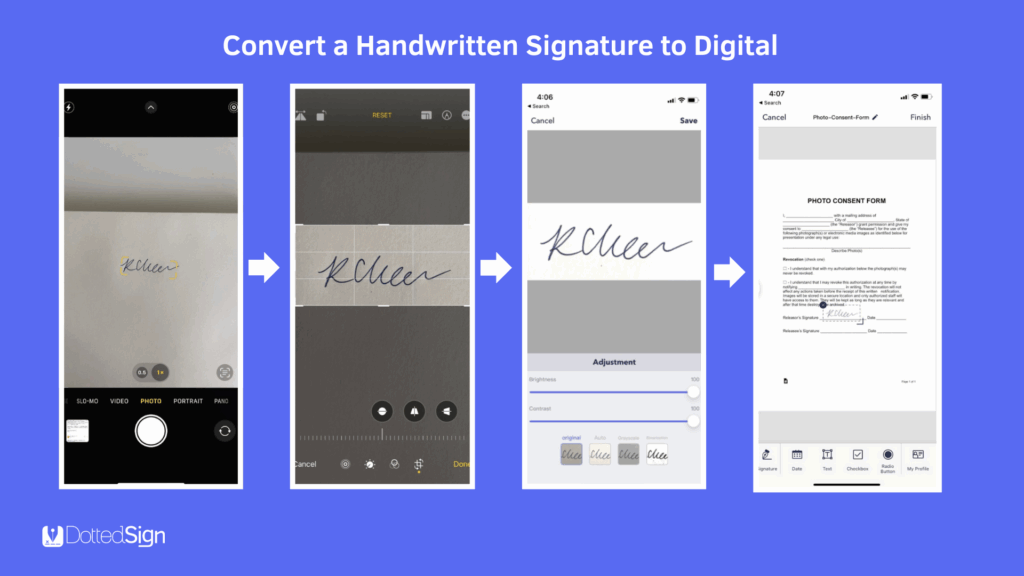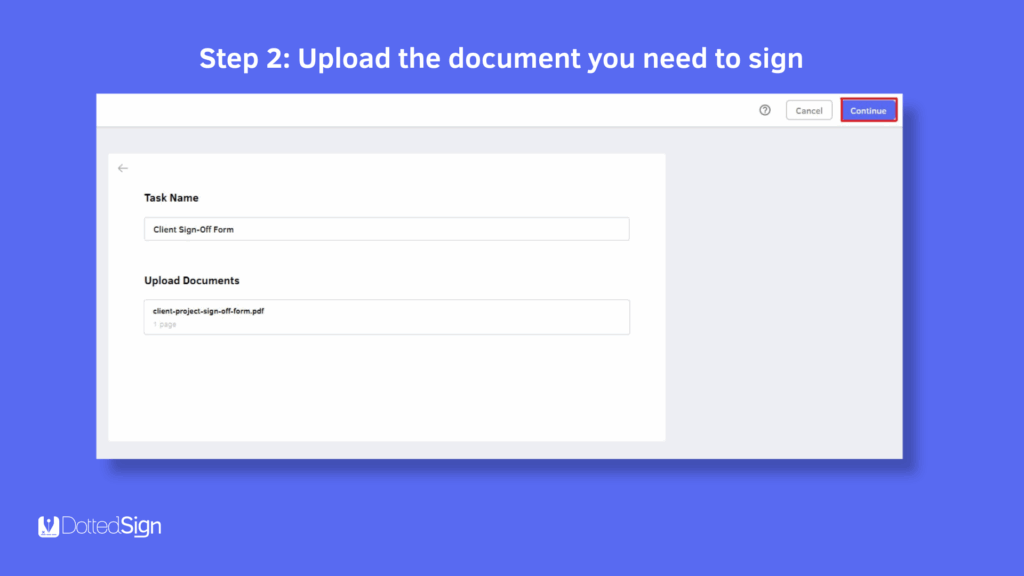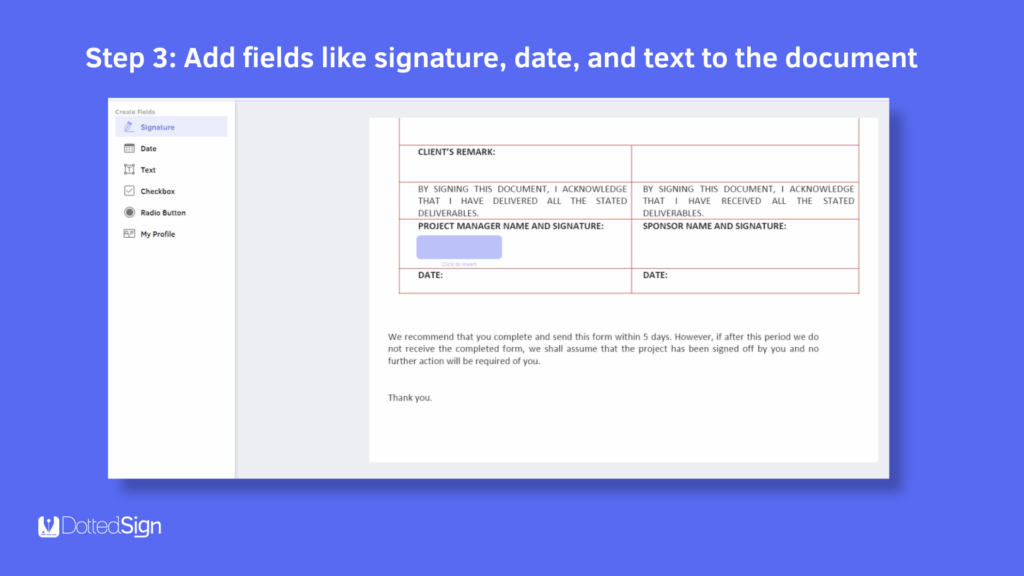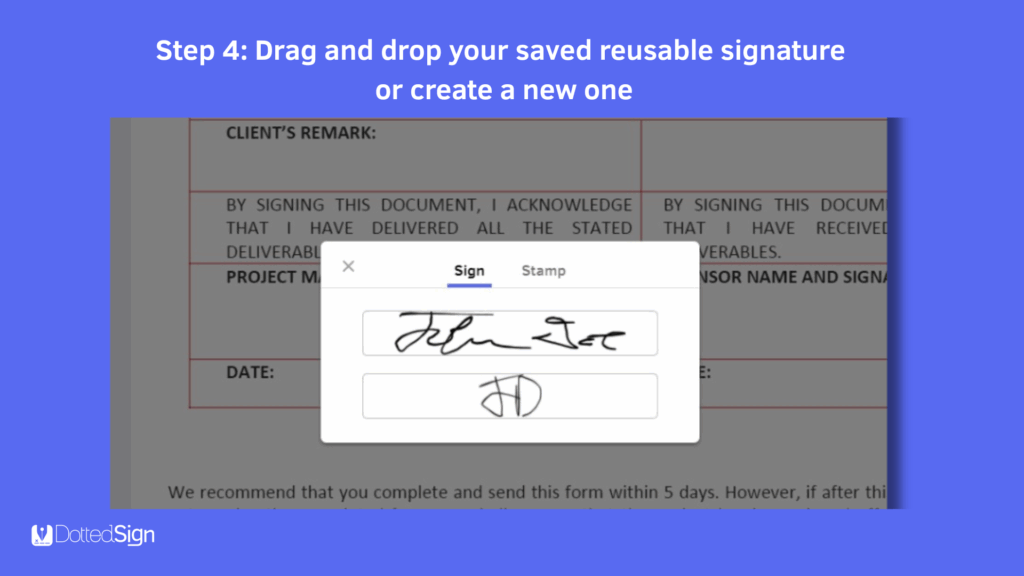How to Upload a Signature — Simplifying the Process With Valuable Digital Solutions
Originally published on 16 February 2023. Last updated on 2 July 2025.
Uploading a signature doesn’t have to be complicated. Whether you’re finalizing contracts, filling out forms, or collaborating online, knowing how to upload your signature to digital documents can save you time and effort.
According to Finances Online, 69% of people prefer using an electronic signature over signing in person, and it’s easy to see why. Electronic signatures are faster, more secure, and ideal for both individuals and businesses working remotely or digitally.
However, with the various types of electronic signatures available to users, uploading a new or existing signature can be more difficult than necessary. Fortunately, with the growth of digital signature platforms, organizations and people don’t have to tackle the process alone.
In this guide, we’ll walk you through:
- What digital and electronic signatures are
- The easiest ways to upload a signature to PDFs and Google Docs
- How digital signature tools like DottedSign make signing simple, secure, and legally valid
Let’s get started.
Taking a Look at Digital Signatures
Signature Types — Wet Ink vs Electronic vs Digital
| Signature Type | Definition | Format | Use Case | Security Level | Legally Binding? |
| Handwritten (Wet Ink) | A physical signature written with pen on paper. Historically used to authenticate documents. | Paper-based | Traditional contracts, in-person agreements | Low – can be forged or copied | ✅ Yes (on physical docs) |
| Electronic Signature | An electronic mark (name, symbol, click) made with intent to sign a digital document. | Typed name, image, checkboxes, etc. | Online forms, email agreements, digital documents | Medium – depends on method | ✅ Yes (under e-sign laws) |
| Digital Signature | A secure form of e-signature that uses encryption and digital certificates for verification. | Encrypted certificate-based | High-security contracts, legal/financial documents | High – cryptographically protected | ✅ Yes (legally strongest) |
- Handwritten signature: Also known as a wet ink, physical, or traditional signature, a handwritten signature describes the process of signing a physical document. Throughout history, a physical signature was essential for important documents to represent a binding contract and prevent fraud.
- Electronic signature: This is a broad term used to describe an electronic sound, symbol, or process that’s applied to a digital document. It’s intended to serve as a binding agreement, executed or adopted by a person with the intent to sign the record.
- Digital signature: While frequently used as a synonym for an e-signature, they’re not the same. A digital signature is a type of electronic signature, however, its added layers of protection make it more secure. Typically, digital signatures are the better choice for organizations managing multiple signatures and important documents containing sensitive information.
How Secure Are Digital Signatures?
Digital signatures are essentially virtual fingerprints, designed to verify a signer’s identity and minimize the possibility of tampering or forgery. In other words, yes, digital signatures are both incredibly secure and legally binding.
How It Works
Digital signatures utilize a standard accepted format, known as a Public Key Infrastructure (PKI), for authenticating digital identities and encrypting data. A PKI uses a mathematical algorithm to generate a public key and a private key, which are unique to a signer and encrypt the document’s data. The signature is verified with a digital certificate issued by a Certificate Authority (CA).
These additional security layers ensure that a signer is exactly who they claim to be and increase the transparency of online interactions, which are crucial for building trust with business partners, vendors, customers, and other key stakeholders.
With a trusted, easy-to-adopt e-signature solution like DottedSign, organizations can rest assured that their electronic signing process is secure and legally binding. Our platform’s security features include:
- An encrypted process: Each signed document is encrypted by TLS/SSL, AES-256, and RSA-2048. DottedSign provides further protection by providing self-serve Single Sign-on (SSO).
- Advanced security: Every digital certificate is issued by an Adobe Approved Trusted List (AATL) authorized Certificate Authority (CA) to safeguard signers’ identity authentication and signature validation. Password verification and access lock capabilities are designed to double-protect accounts from unauthorized usage.
- A detailed audit trail: DottedSign records all signers’ actions to digital documents, ensuring a signature’s non-repudiation and legal weight. This includes the name, email address, date, time stamp, IP address, and device used.

The Benefits an E-Signature Solution Can Offer
A secure signature solution offers organizations a range of valuable long-term benefits. Digital signatures mean that businesses can do away with printing, scanning, and mailing and simplify everyday business tasks while adding layers of protection and assurance, too. The top advantages of a digital e-certified electronic signature solution include:
- It is easy to use and adopt across industries and countries.
- Cutting costs and saving time.
- Improving convenience and workflow tracking.
- Promoting enhanced collaboration.
- Centralizing storage and introducing paperless workflows.
- Increasing visibility into document management.
- Driving sustainability goals.
Steps to Upload Your Signature in Digital Documents
Because an e-signature is a wide-encompassing term, let’s go over what’s accepted as a valid electronic signature:
- A typed email signature.
- A typed name on an electronic form or document.
- A personal identification number (PIN).
- Clicking “agree” or “disagree” on an electronic “terms and agreements” contract.
- A scanned image of a handwritten signature.
- A digital signature is generated by an e-signature solution like DottedSign.
With these various e-signatures in mind, it’s important to note that not all of these e-signatures are created equal in the eyes of the law. The most common legally binding options include scanned signatures and digital signature solutions. For authentication and to avoid phishing attacks, the SPF checker can simply be applied when using e-signatures for documents sent via email.
Uploading a Scanned Signature
Follow this guide to add a scanned handwritten signature to a document (you’ll need a scanner to do this):

- Write your signature on a piece of paper.
- Scan the paper and save it on your computer in a common file format.
- Open the image file on your computer.
- Crop the signature image to your preferred size.
- Right-click the image and save the picture as a separate file.
- Click ‘Insert’ and then ‘Pictures’ to find and add your signature to the document.
Note: A scanned signature on a contract or legal document is undoubtedly acceptable under the law. So, organizations can rest assured that acceptance won’t be an issue. But, is this the simplest way to sign an electronic document? The short answer is no, particularly when it comes to altering a PDF file. We’re taking a look at an easier way below.
Upload Your Signature with Ease Using DottedSign
With DottedSign — a smart, easy-to-adopt e-signature solution — businesses can significantly streamline the electronic signature uploading process. After creating a reusable signature, DottedSign makes the electronic signing process easy, providing convenience and a variety of valuable features to fulfill even the most complex requirements.
Step-by-Step: Upload a Signature to PDF or Word Using DottedSign
Here are the steps to upload a signature or initials onto a PDF file or Word document:
- Click ‘Create New Tasks,’ and choose ‘Sign Yourself.’

2. Upload your document (PDF, Word, or image file), then click “Continue.”

3. Now, you have the option to add a signature, date, text, radio button, and a checkbox to your document’s signature block.

4. Insert your saved signature or initials by dragging and dropping the signature field into place. Adjust the size if needed.

- Lastly, click ‘Continue’ to confirm signing. The completed, signed document will be displayed under the ‘Completed’ section.
The comprehensive DottedSign platform also allows individuals and businesses to sign documents via Mobile Panel and add pre-filled information to ensure every signer has the tools and information they need for effortless electronic signing.
How to Upload a Signature to Google Docs
If you’re working in Google Docs and need to add your signature, follow these simple steps:
- Create or digitize your signature
- Write your signature on paper and scan or take a photo of it.
- Save it as a PNG or JPG file on your computer or mobile device.
- Write your signature on paper and scan or take a photo of it.
- Insert the signature into your Google Doc
- Open your document in Google Docs.
- Click “Insert” > “Image” > “Upload from computer” (or “Drive” if saved in Google Drive).
- Select your signature file and adjust its position on the page.
- Open your document in Google Docs.
- Resize and move as needed
- Click and drag the corners of the image to resize.
- Move it to the signature line or appropriate location in the document.
- Click and drag the corners of the image to resize.
🔐 For added security and a more professional process, consider signing directly with DottedSign, where you can upload and sign Google Docs as PDFs, track changes, and ensure compliance.
Elevate Your Signing Process With a Top-tier Digital Signature Solution
Today, there are several approaches to uploading an electronic signature that will ultimately do the trick. But, for individuals and organizations managing sensitive information, multiple documents, and numerous signing parties, a powerful e-signature solution can provide the support and security needed to streamline the process.
With DottedSign, businesses can:
- Generate secure, legally binding digital signatures.
- Quickly sign and send documents online.
- Create signing tasks and automatically move deals forward.
- Customize organizational branding.
- Close deals faster.
- Improve the customer experience.
- Sign documents across devices — anytime, anywhere.
Ready to accelerate your signing process? Register your free DottedSign account and start signing with an electronic signature today!


